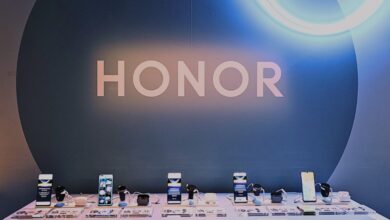
Samsung made the world’s first QD-LED display. It’s a new kind of technology that might replace OLED.
Samsung Display showed some new products at Display Week 2024. One of them is a prototype monitor that has a new kind of technology. Some people think this technology could take the place of OLED. Samsung made the world’s first 18-inch QD-LED display. They call it next-generation self-emissive tech.
We’ve already seen QD-OLED panels in some TVs and monitors, like the Asus PG32UCDM. QD-LED, also known as NanoLED or QDEL, is also self-emissive. It uses electricity directly on the quantum dots. The company said, “This next-generation self-emissive technology features QD RGB pixels emitting light directly through current drive without the need for OLED.”
Samsung says QD-LED offers a wide color gamut and high color accuracy for a superior viewing experience. As it doesn’t have any organic material, QD-LED isn’t susceptible to the kind of long-term damage often seen in OLED panels.
QD-LED has another good thing about it: the panels are made using Inkjet Printing (IJP). TCL has already used this method for its OLED TVs. It helps make the manufacturing process more efficient and cheaper, especially when making a lot of panels. Also, QD-LED panels use quantum dots that don’t have cadmium, which is better for the environment.
The QD-LED TV Samsung showed isn’t super impressive in terms of its specs. It’s 18.2 inches big and has a resolution of 3200 x 1800 (202 pixels per inch), with a brightness of just 250 nits. But remember, it’s just a prototype. This is the biggest one Samsung has shown so far. They had shown 12.3-inch and 14-inch versions before.
Shoei Chemical in Japan, which owns Nanosys, the company that makes QD-LED, says they want to speed up making this technology. They think it could be ready for mass production by 2025 or 2026 at the earliest. Some experts say the biggest challenge for QD-LED is making sure the blue quantum dot lasts a long time.
Samsung also showed other things at the event, like really thin OLED panels, a 3D OLED panel that doesn’t need glasses, and an OLEDoS display for XR headsets.






